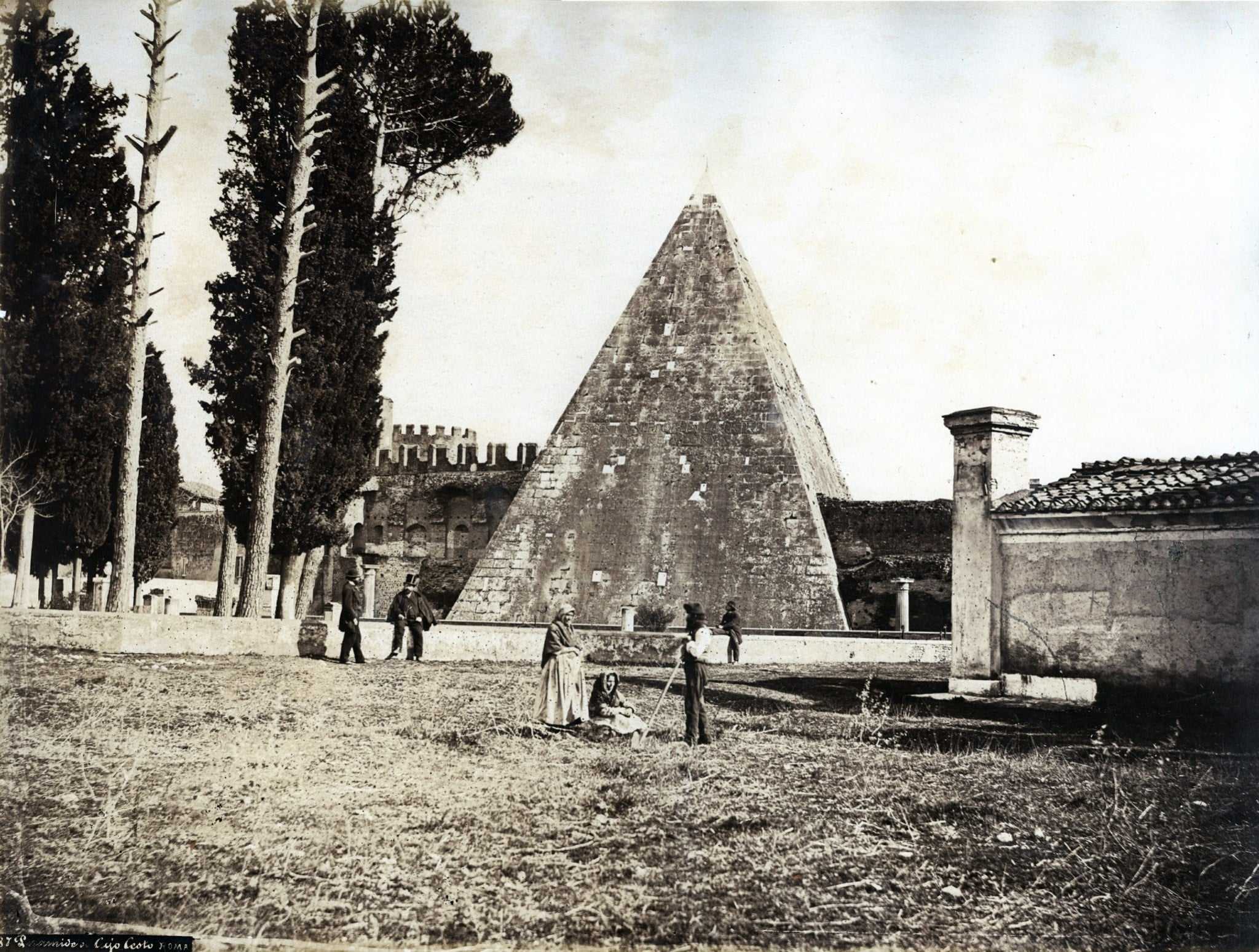The Pyramid of Cestius: A Unique Roman Monument
Nestled in the heart of Rome, the Pyramid of Cestius stands as a fascinating testament to the city’s rich tapestry of history and culture. Unlike the more famous pyramids of Egypt, this Roman pyramid is a unique blend of architectural styles and historical significance. For those interested in exploring lesser-known historical sites, the Pyramid of Cestius offers a captivating glimpse into ancient Rome’s diverse influences and the personal story of a wealthy Roman.
Historical Background
The Pyramid of Cestius was constructed between 18 and 12 BC as a tomb for Gaius Cestius, a Roman magistrate and member of the Epulones religious corporation. This period in Roman history was marked by a fascination with Egyptian culture, following Rome’s conquest of Egypt in 30 BC. The pyramid’s construction reflects this cultural exchange, showcasing how Roman society absorbed and adapted foreign influences.
The pyramid is made of brick-faced concrete covered with slabs of white Carrara marble, standing at approximately 36 meters (118 feet) high. Its sharp angles and smooth surfaces are reminiscent of the Nubian pyramids of Meroë, rather than the more widely recognized pyramids of Giza. This design choice highlights the eclectic tastes of the Roman elite during this era, who were eager to display their wealth and sophistication through unique architectural projects.
Architectural Features
The Pyramid of Cestius is an intriguing blend of Roman and Egyptian architectural elements. Its exterior is strikingly simple, with a smooth, white marble surface that has withstood the test of time remarkably well. The pyramid’s interior, however, is less elaborate, consisting of a single burial chamber adorned with frescoes that have faded over the centuries.
One of the most interesting aspects of the pyramid is its location. It was originally built outside the city walls, as Roman law prohibited burials within the city limits. However, the expansion of Rome’s Aurelian Walls in the 3rd century AD incorporated the pyramid into the city’s fortifications, ensuring its preservation through the ages.
The pyramid’s design and construction techniques offer valuable insights into Roman engineering and architectural practices. The use of concrete, a Roman innovation, allowed for the creation of large, durable structures that could be built relatively quickly. The choice of marble cladding not only added to the pyramid’s aesthetic appeal but also demonstrated the wealth and status of its owner.
Visiting the Pyramid
Today, the Pyramid of Cestius is a popular tourist attraction, offering visitors a unique opportunity to explore a lesser-known aspect of Roman history. Located near the Porta San Paolo and the Protestant Cemetery, the pyramid is easily accessible by public transportation, making it a convenient stop for those exploring Rome.
Visitors can admire the pyramid’s exterior and learn about its history through informational plaques located around the site. While the interior is not typically open to the public, special guided tours are occasionally offered, providing a rare chance to see the burial chamber and its ancient frescoes.
The surrounding area is also worth exploring. The Protestant Cemetery, where notable figures such as the poets John Keats and Percy Bysshe Shelley are buried, offers a peaceful retreat from the bustling city. Additionally, the nearby Porta San Paolo Museum provides further insights into Rome’s ancient history and the construction of the Aurelian Walls.
